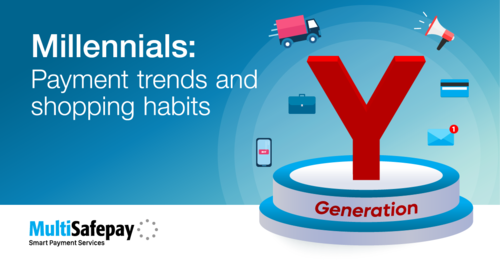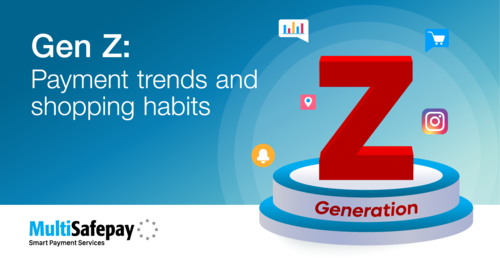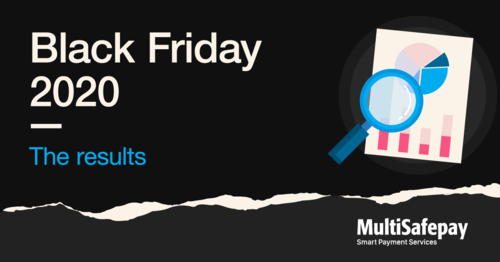Undoubtedly, the COVID-19 pandemic is one of the most significant events of 2020, probably even of the current decade. After the first wave, many countries now find themselves in a second wave of sorts, further prolonging the effects on people and their businesses.
Some of the more interesting side effects are the various developments in the ecommerce sector. In this article we’ll give you insight into the boost that COVID-19 has given to ecommerce, along with various rising trends and how you can be prepared for the future.
Accelerated shift from retail to ecommerce
Due to forced closure of many retail locations, the shift towards ecommerce has naturally been accelerated. Experts estimate the previous trajectory has been accelerated by up to 5 years. Conducted research shows that this shift does not seem to be temporary, as many consumers have gotten a taste of the current way of purchasing products and think it is unlikely that they will refer back to their old ways. 36% of European consumers estimate that they will keep purchasing products online instead of through retail stores in the future.
How to utilise this acceleration? Say you’re currently an online-only merchant, consider cooperating with local stores as not every physical store might have an online presence. Cooperating could be a solution to increase your available products, boost local investment and help other businesses make the most out of the current situation.
Main priorities when ordering online
Interestingly enough, during the pandemic the preferences for online consumers have changed. Whereas pre-COVID-19 faster delivery and a cheaper price were the most important reasons, flexibility has grown considerably. Although the main influencers in completing a purchase vary per country, overall throughout Europe the option to select when a product gets delivered has increased in importance, now ranking second behind the price. Consumers also show a shift in their willingness to wait for their products, as pre-pandemic the average expected waiting time was 4 days, and during the pandemic this was raised to 5.4 days, which is quite a significant increase.
For the Netherlands specifically, the ability to change time and place of delivery ranks first on the list of delivery preferences, something to note and remember when you offer your products in the Netherlands. Also, to fully accommodate your consumers it’s essential to keep your consumers informed of potential delays. Most MultiSafepay integrations offer you the option to send shipping information and delays, directly from your backend.
Payment methods
iDEAL still reigns supreme in the Netherlands
When looking at the various payment methods used during and pre-pandemic, iDEAL is still head and shoulders above the rest. When asked which payment method consumers used at least once during their online purchases in Q2 2020, 89% of respondents ticked off iDEAL (an increase of 3% when compared to Q2 2019 - 86%).
Other major payment methods on the Dutch market are:
- Credit cards (-1% vs. Q2 2019)
- PayPal (+3% vs. Q2 2019)
- AfterPay (+0% vs. Q2 2019)
- Klarna (+4% vs. Q2 2019)
The rise of postpay
It’s noteworthy that paying after delivery is on the rise in the Netherlands, showing the largest relative growth in Q2 2020. As one of AfterPays payment experts alludes:
“Being able to use payment after delivery services – get the products, trying them first and paying for them later – gives consumers even more confidence. Convenience and trust are key in the current online landscape”
MultiSafepay offers its merchants various options when it comes to postpay payment methods, through the comprehensive MultiSafepay Billing Suite.
By offering a variety of postpay methods, there is one suited for each purpose, for example: Santanders Betaal per Maand, for large purchases; Klarna, for postpay domestic and abroad; Afterpay, one of the most popular ones in the Netherlands and last but not least our very own Pay after Delivery, finely tuned to match Dutch consumer needs.
More purchases, yet less value per purchase
As the pandemic kept people at home, many people have resorted to smaller online purchases, products that they would otherwise buy in retail stores. Research among the Dutch has shown that consumers, on average, make an online purchase 6.8 times in three months (+27% y.o.y.). While the overall amount spent has increased (+5% y.o.y.), the average amount spent per purchase has decreased by 17%. Further enforcing the opening statement of this paragraph.
Various sectors in ecommerce have shown more success than others, goods such as groceries, alcohol and home improvement have been on the rise, while clothing and shoes have been on the decline.
In conclusion, it’s evident that in order to come out of this pandemic in the healthiest way possible, companies need to adapt. For many traditional stores it can be difficult adapting and transitioning into ecommerce. Luckily, here at MultiSafepay we have extensive experience in developing effective solutions in a timely fashion. A great example is our solution for Cashdesk.
We believe that through cooperation and helping each other, we can make this pandemic as successful as possible for many businesses. If you have any initiatives you could use our help with or are looking to transition your company from brick and mortar to ecommerce, please do not hesitate to contact us.
Need our assistance in taking that next step?
Contact



